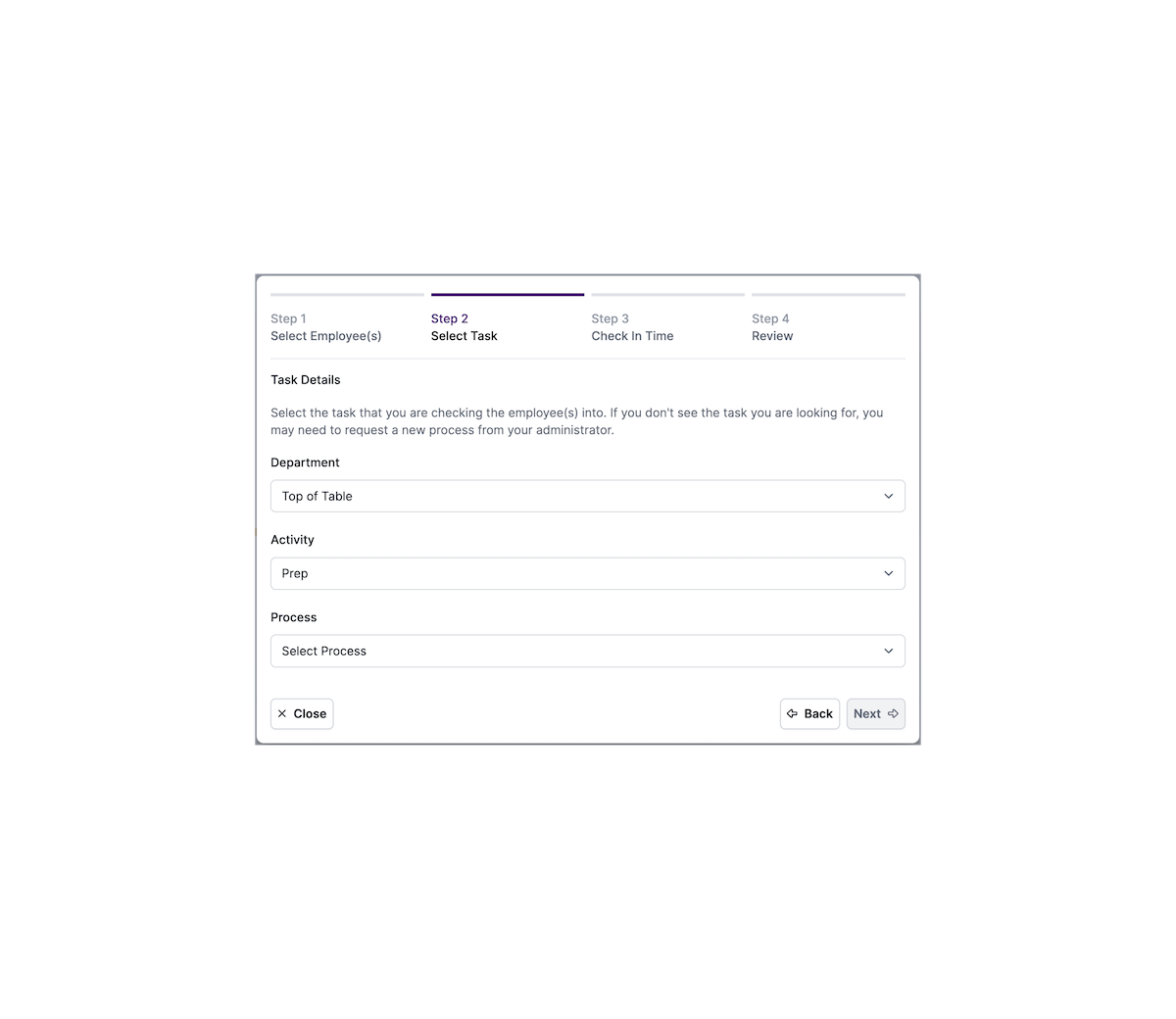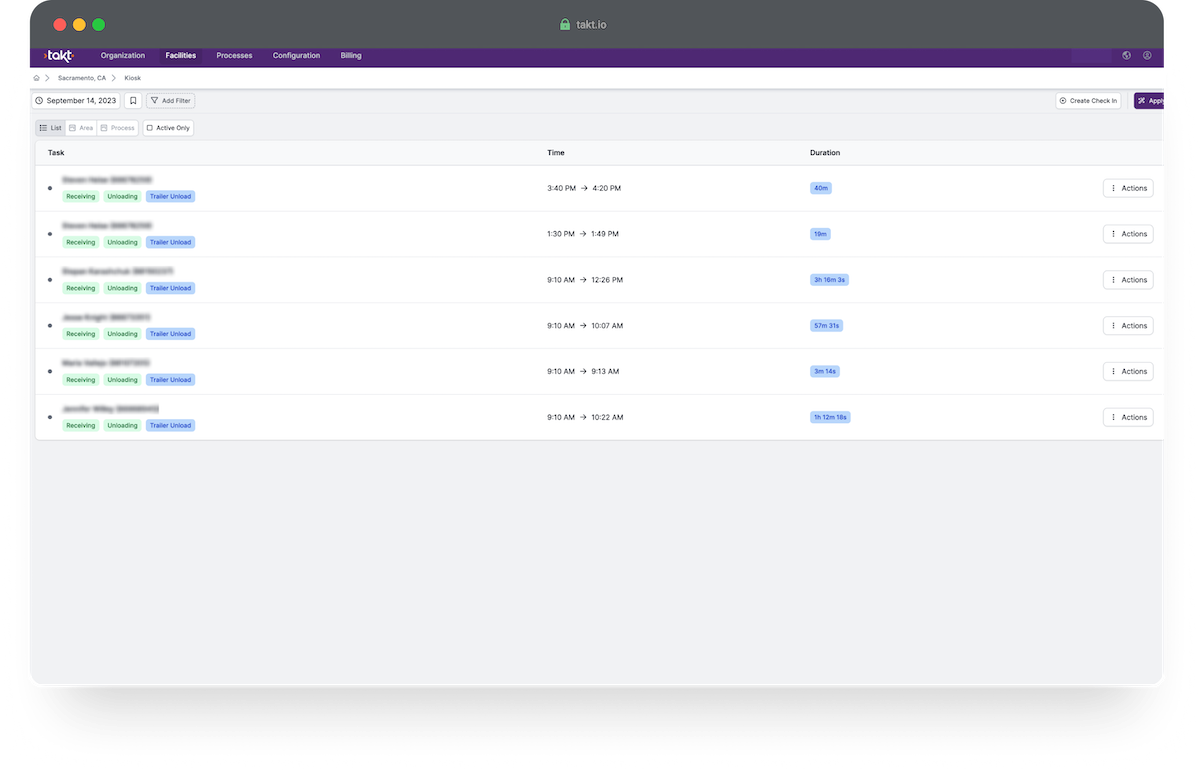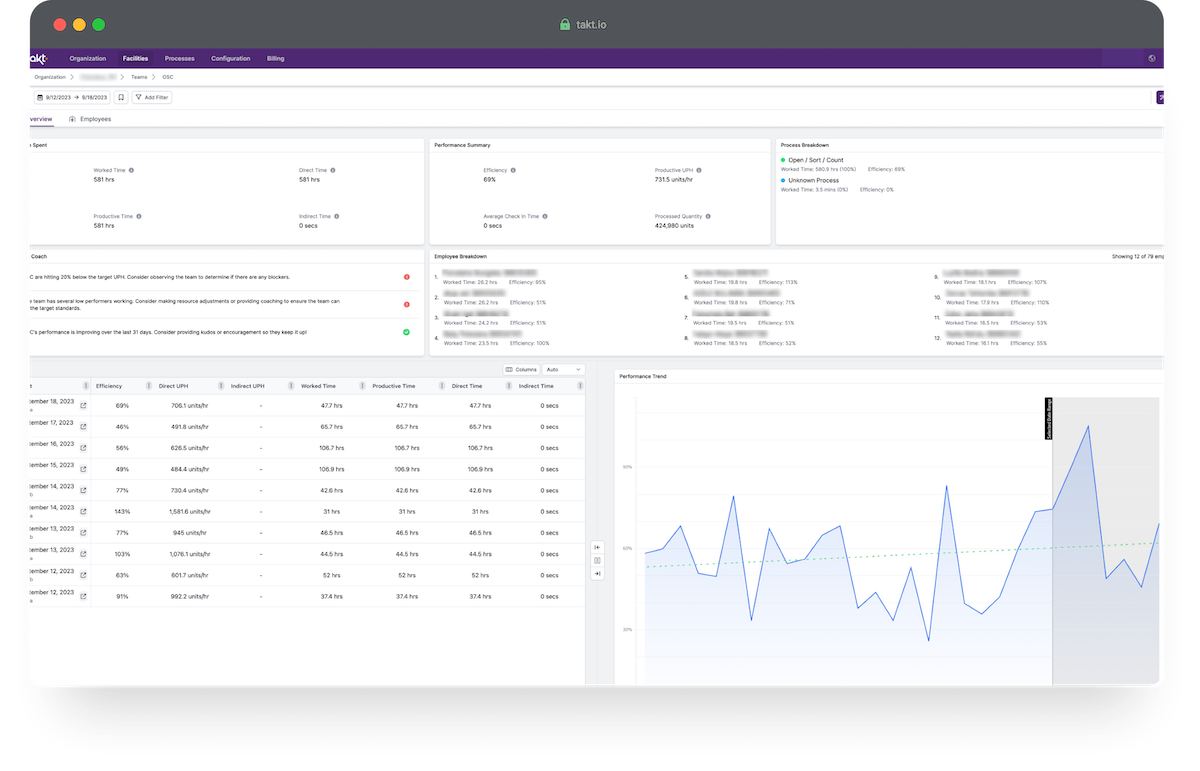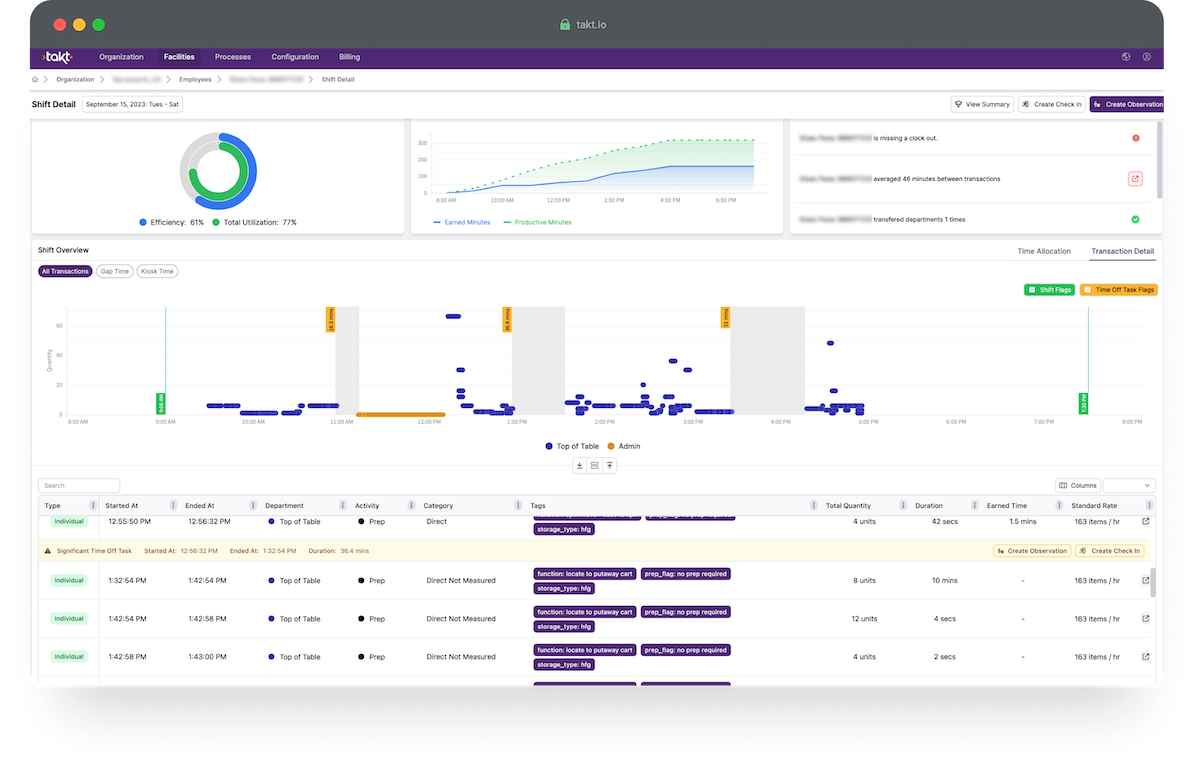Track and Optimize Indirect Labor and Costs
Reduce the indirect to direct ratio, decrease indirect labor costs, and optimize indirect labor using intelligent kiosking and allocated time.
Track Indirect Labor with built-in Kiosk


Easily Manage Indirect Tasks Across the Warehouse
Engineers and operators need to periodically check to ensure labor standards are accurate and correct by benchmarking recent performance against the engineered labor standard. Easily compare actual facility performance against the standard with performance distributions, analyze trends, and identify process bottlenecks that may be impacting the facility.Connect Indirect and Direct Tasks with Teams
Leverage engineered labor standards to measure employee or team labor productivity. Identify opportunities for improvement and trigger observations. Supervisors can use productivity metrics and their observations to provide specific feedback on an employee or teams process, set realistic goals based on facility performance, and track progress towards the goal.

Hold Managers Accountable for Direct and Indirect Utilization
In today's market warehouses don't always have time or budget to develop engineered labor standards. Takt can help operations develop labor baselines using historical performance. Takt develops a distribution of performance and recommends a rate based on engineering best practices to help increase warehouse productivity.
Common Indirect Labor and Indirect Task Questions
What is indirect labor in a warehouse?
Indirect warehouse labor is labor that is not directly involved in the handling of goods, such as picking, packing, and shipping. Instead, indirect warehouse labor is essential for supporting the core warehouse operations. Examples of indirect warehouse labor include:
- Supervisors
- Quality control inspectors
- Maintenance workers
- Janitorial workers
- Truck drivers
- Warehouse clerks
- Administrative staff
- Security guards
Indirect warehouse labor is essential for the smooth operation of any warehouse. It is important to note that indirect warehouse labor can account for a significant portion of a warehouse's overall operating costs. Therefore, it is important to manage indirect labor effectively in order to minimize costs and maximize efficiency.
What is the difference between direct labor and indirect labor?
The main difference between indirect and direct labor in a warehouse is that indirect labor is not directly involved in the handling of goods, while direct labor is.
Direct labor is labor that is directly involved in the handling of goods, such as picking, packing, and shipping. Direct labor employees are responsible for ensuring that goods are moved efficiently and accurately through the warehouse.
Indirect labor is labor that is not directly involved in the handling of goods, but is essential for supporting the core warehouse operations. Examples of indirect labor include:
What is the optimal direct to indirect ratio in the warehouse?
The optimal indirect to direct labor ratio within a warehouse will vary depending on a number of factors, including the size and complexity of the warehouse, the types of goods that are handled, and the level of automation that is used. However, a good general rule of thumb is that the indirect to direct labor ratio should be between 1:3 and 1:5. This means that there should be one indirect labor employee for every three to five direct labor employees.
If the indirect to direct labor ratio is too high, it can lead to increased costs and decreased efficiency. If the indirect to direct labor ratio is too low, it can lead to problems with quality control, maintenance, and other essential warehouse operations.
Who is responsible for indirect labor within the warehouse?
The employee utilization within the warehouse is the responsibility of the warehouse manager. However, other stakeholders, such as the warehouse supervisors and team leads, also play a role in ensuring that employees are utilized effectively.